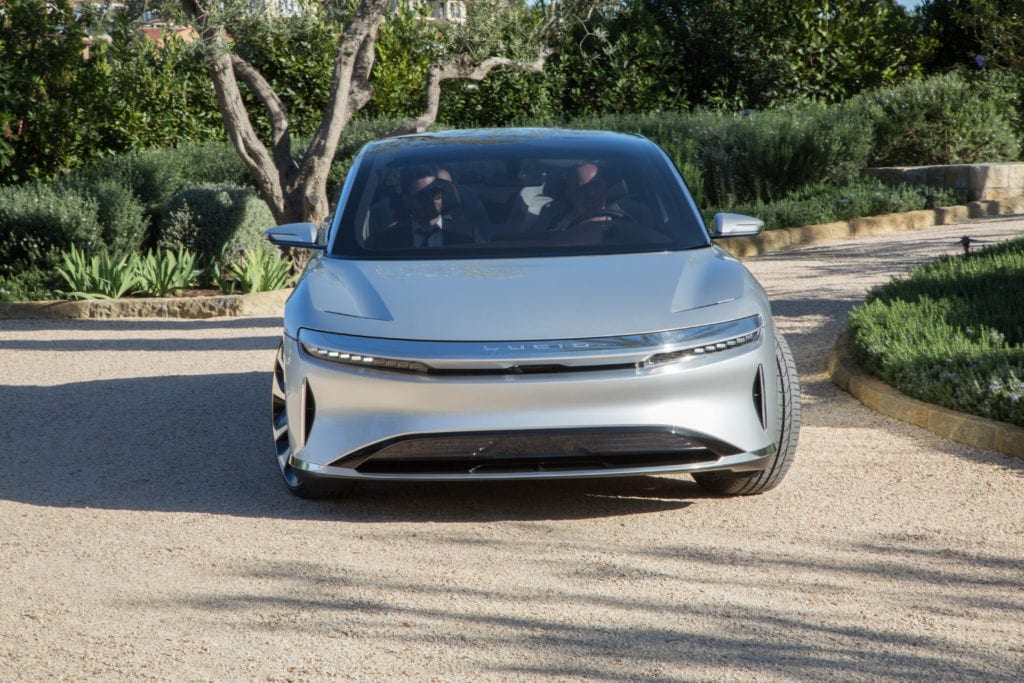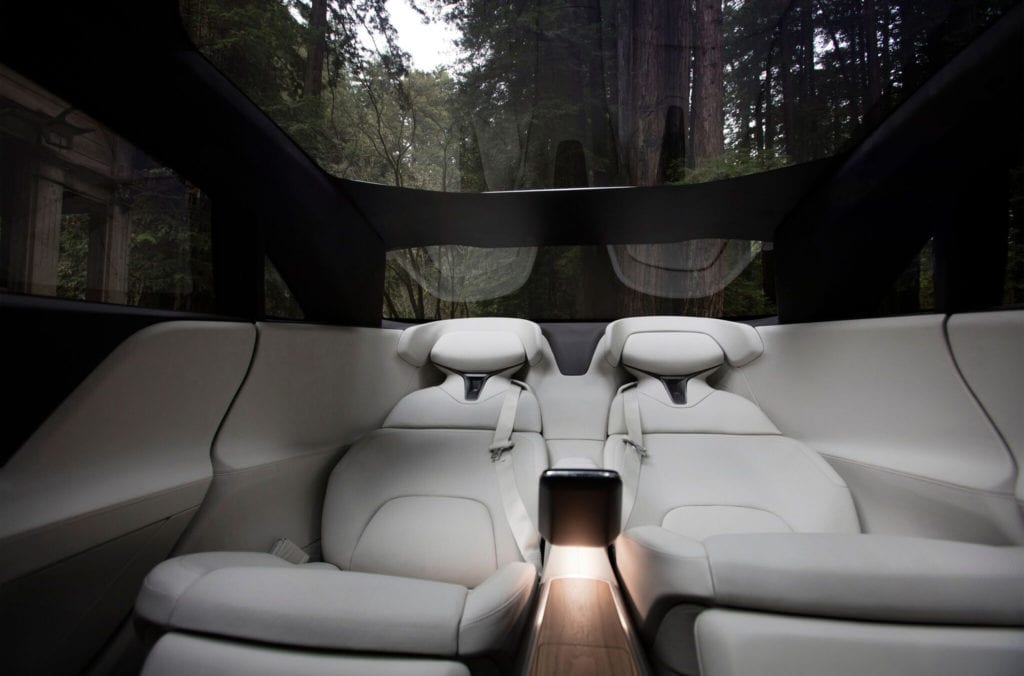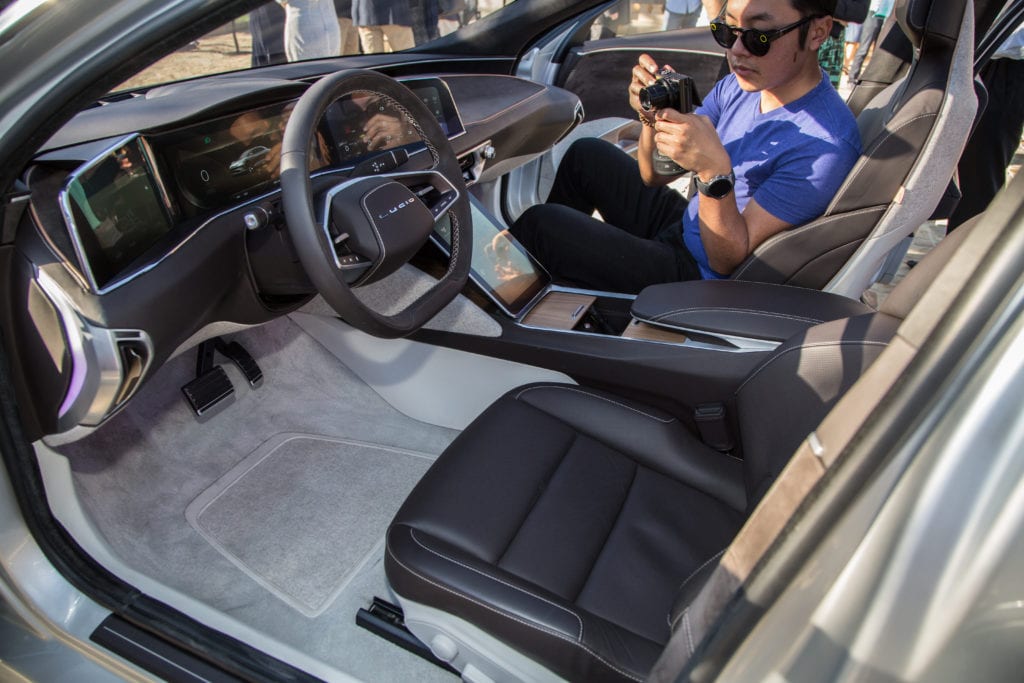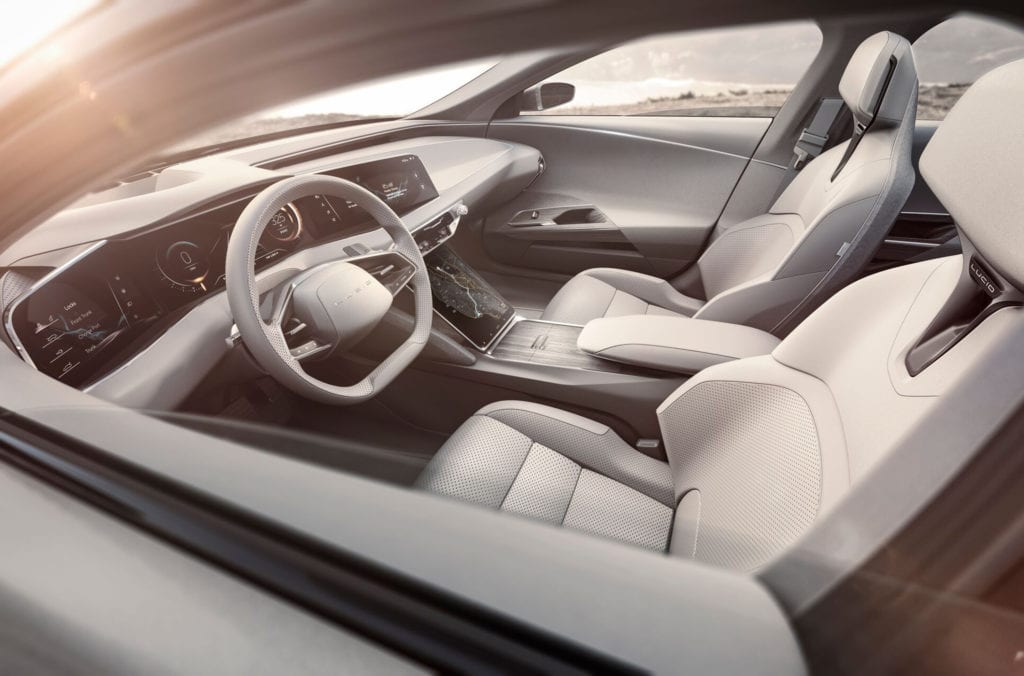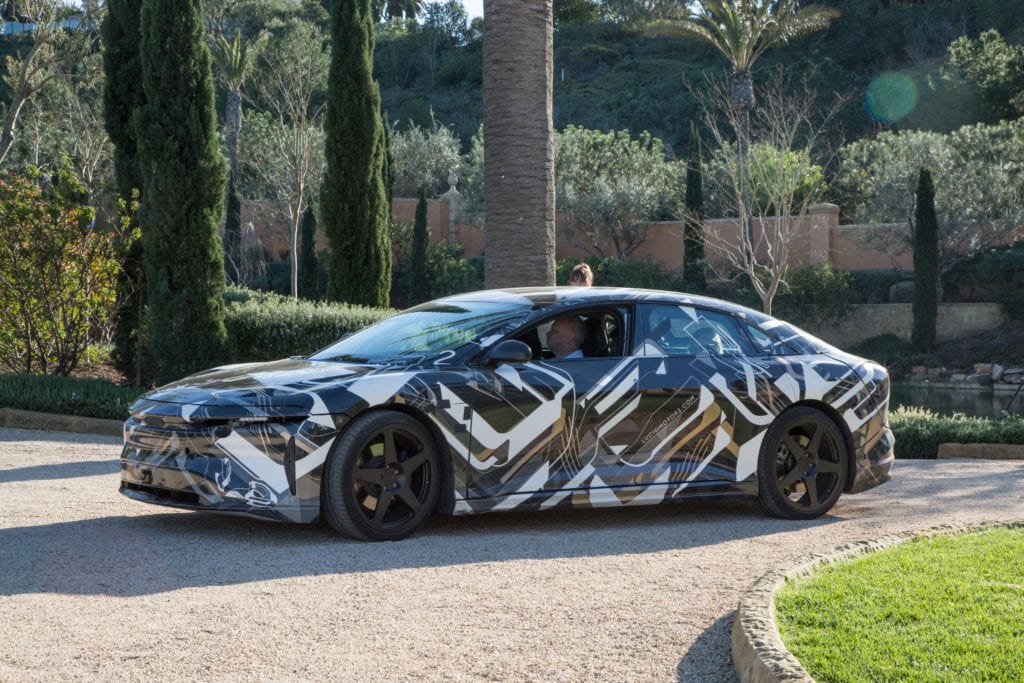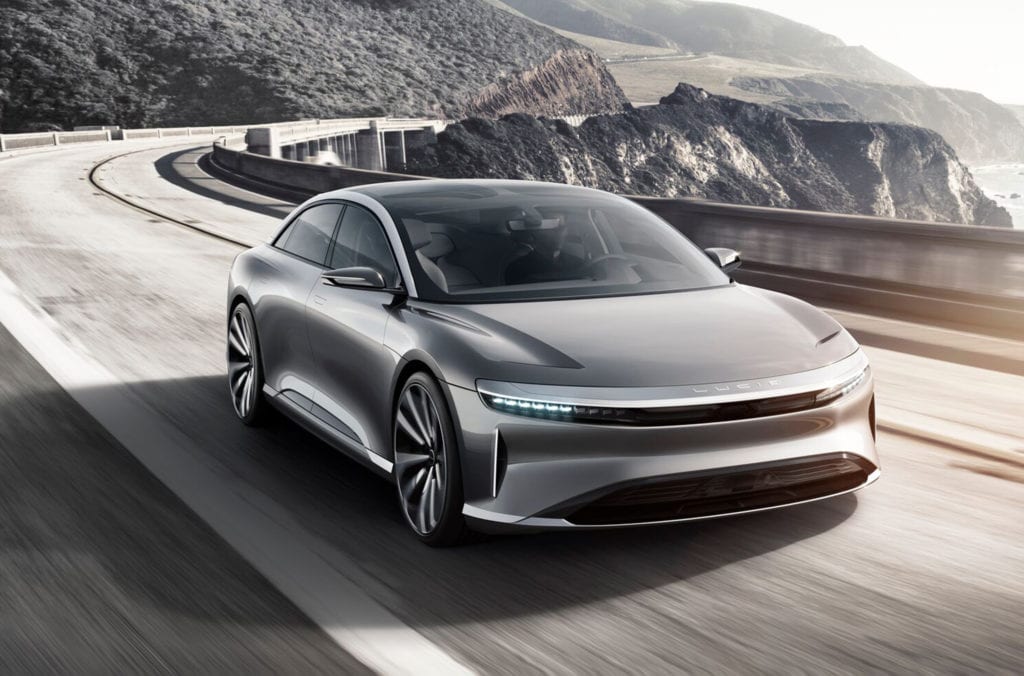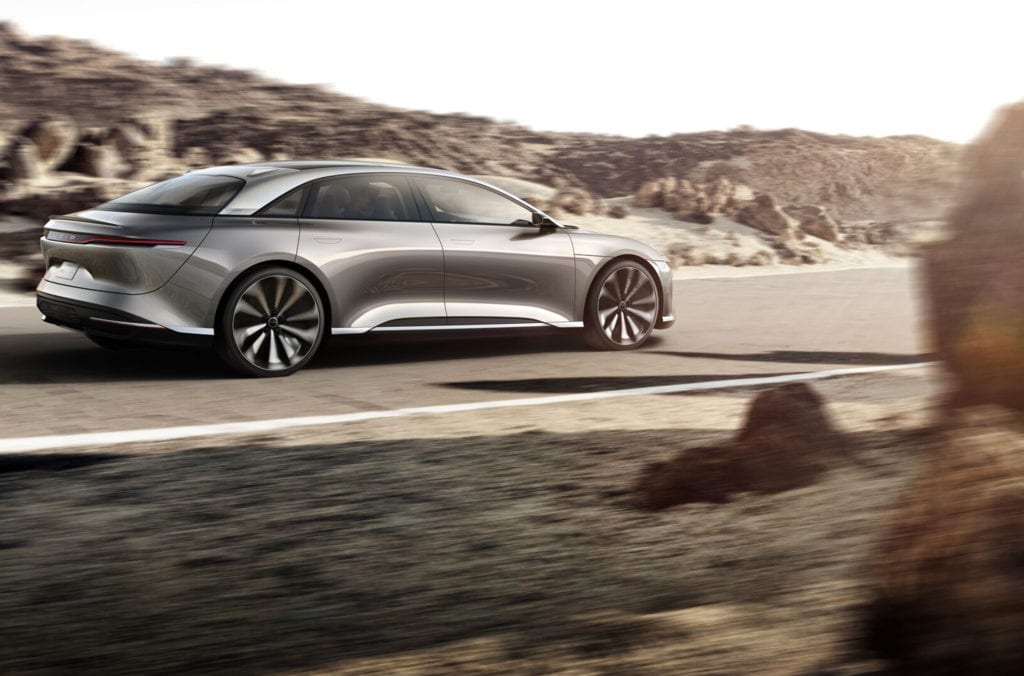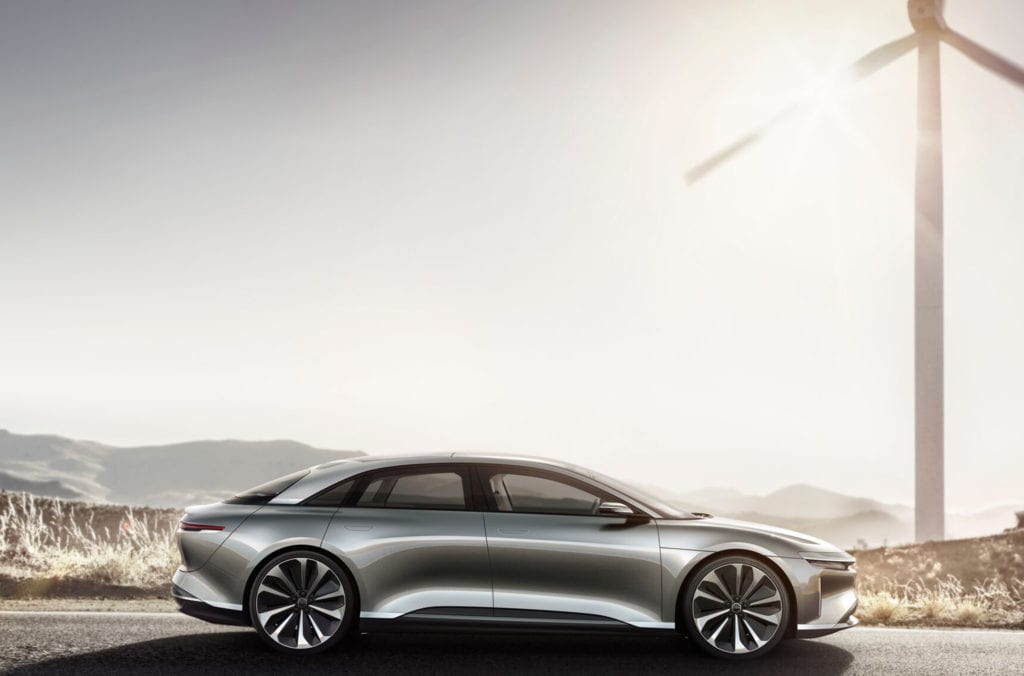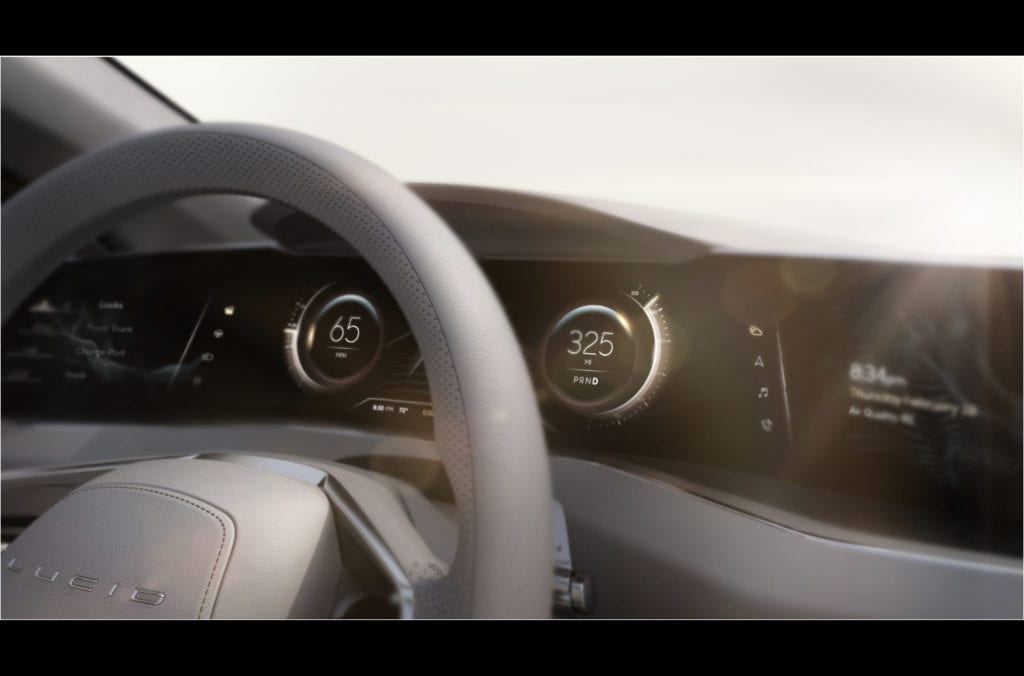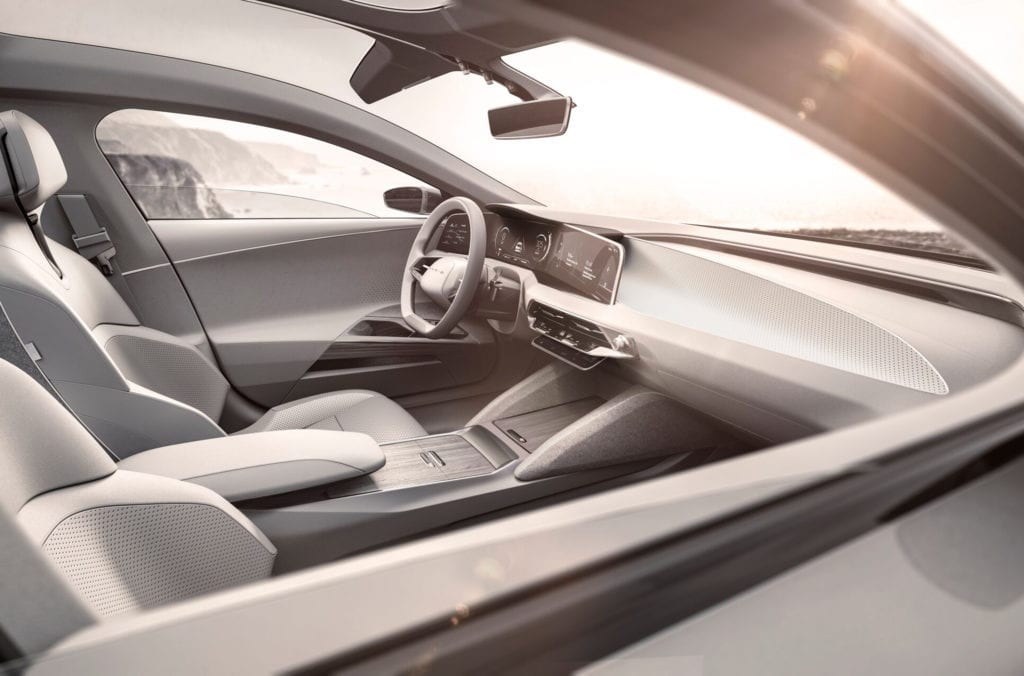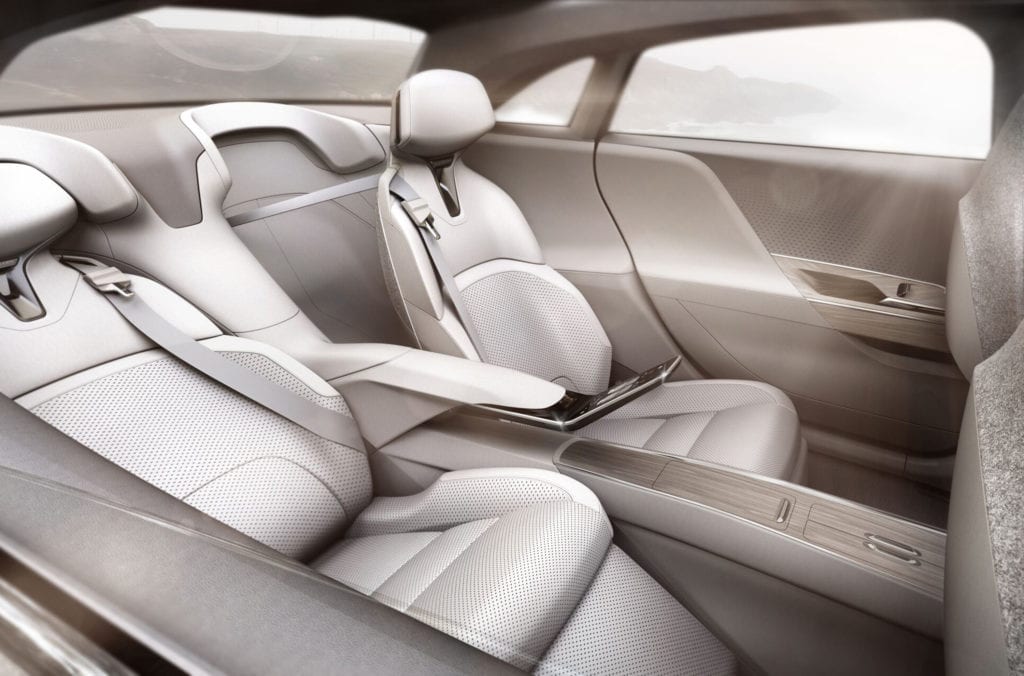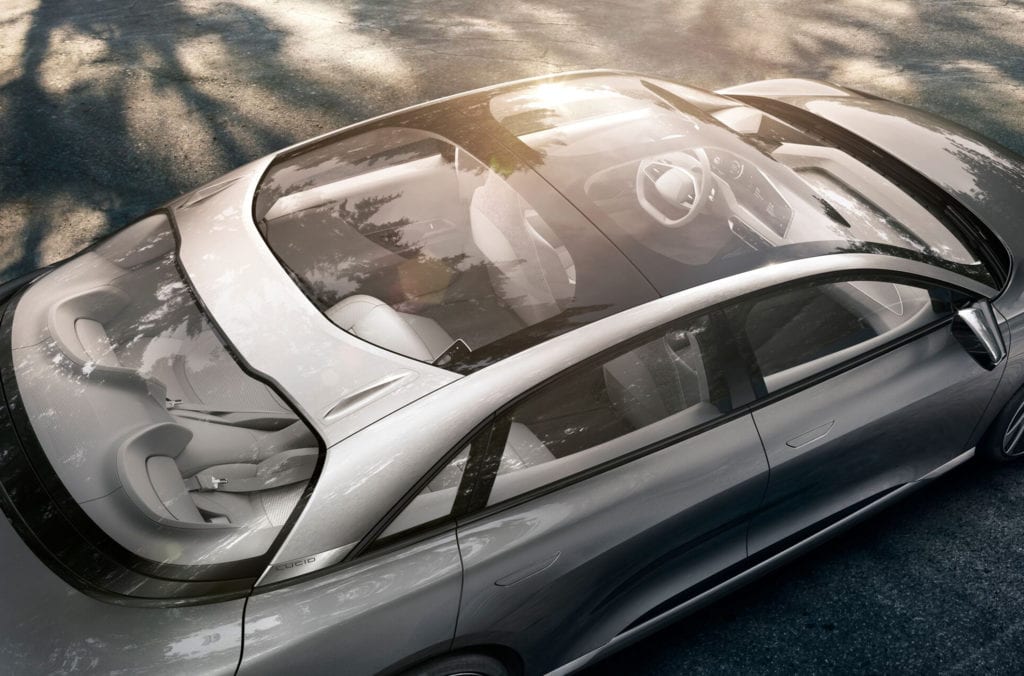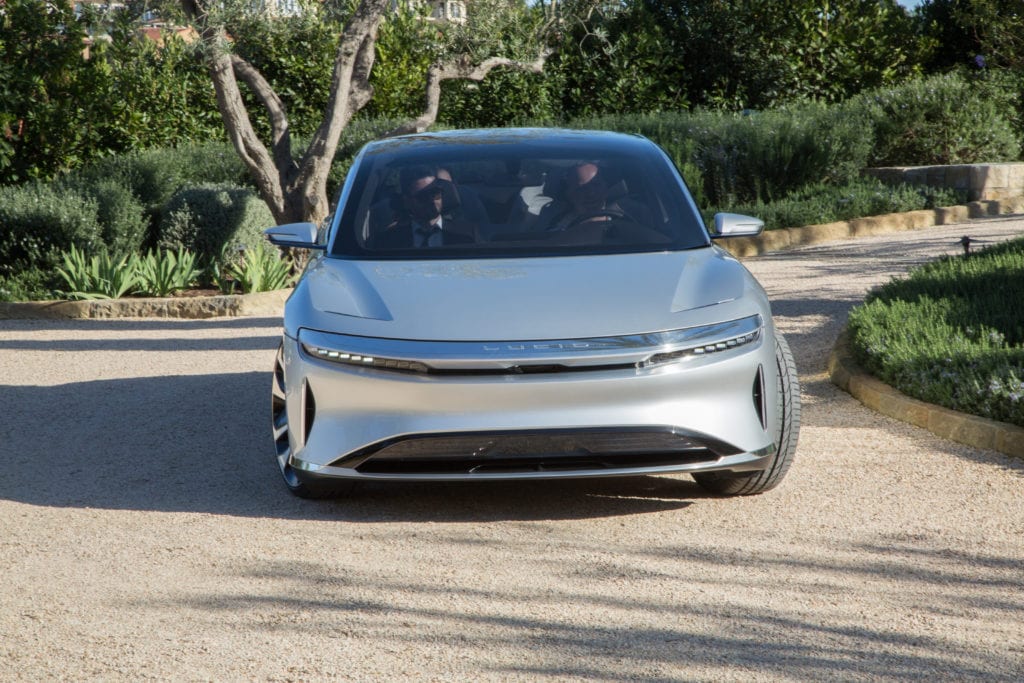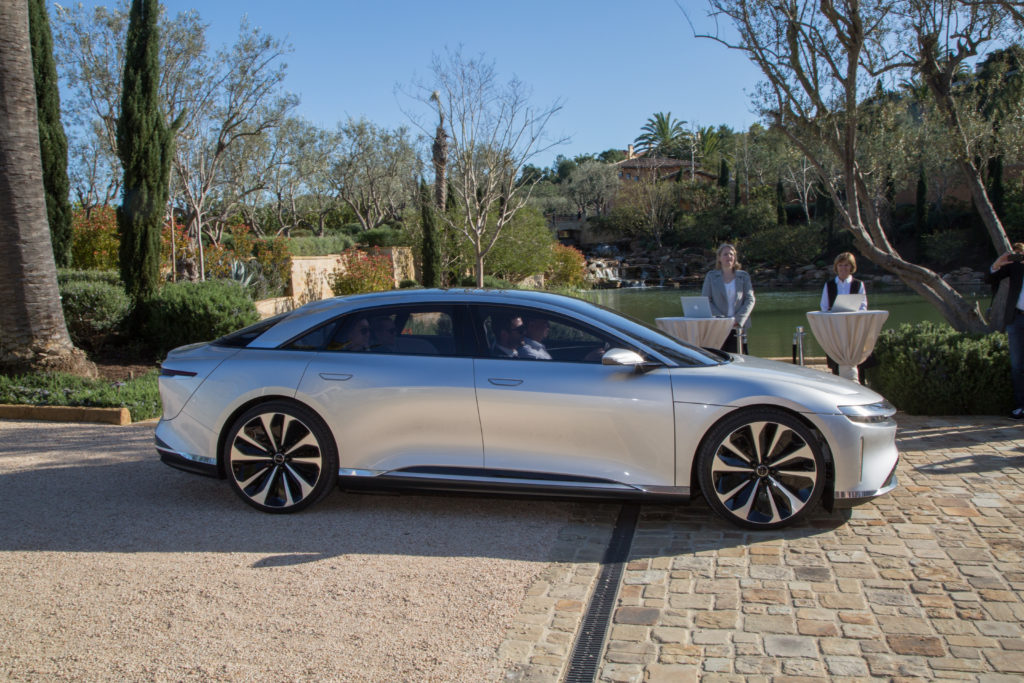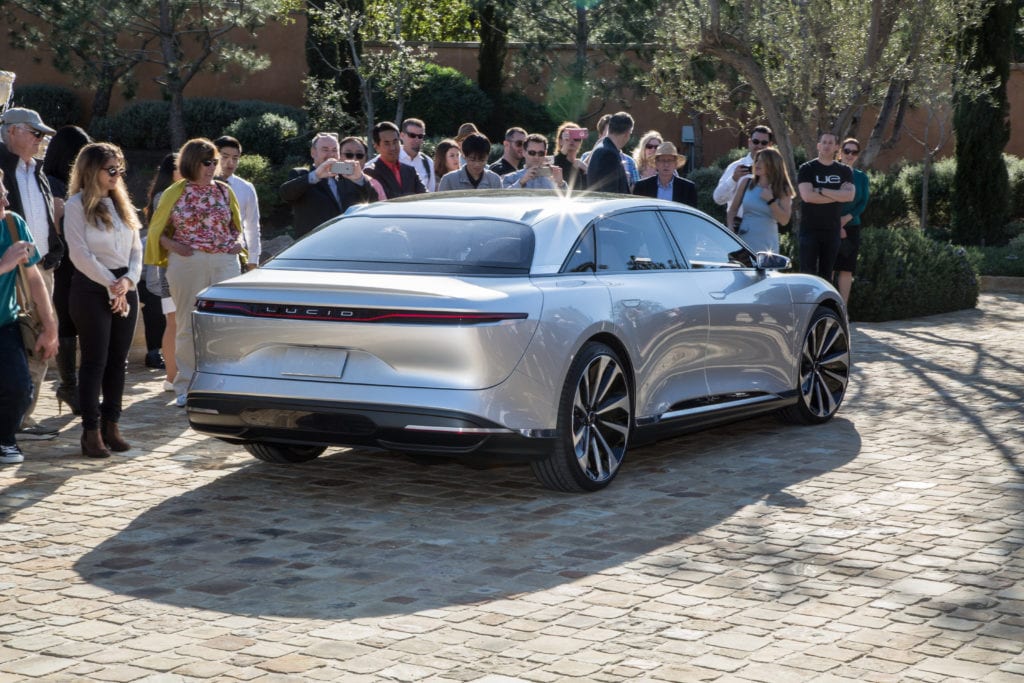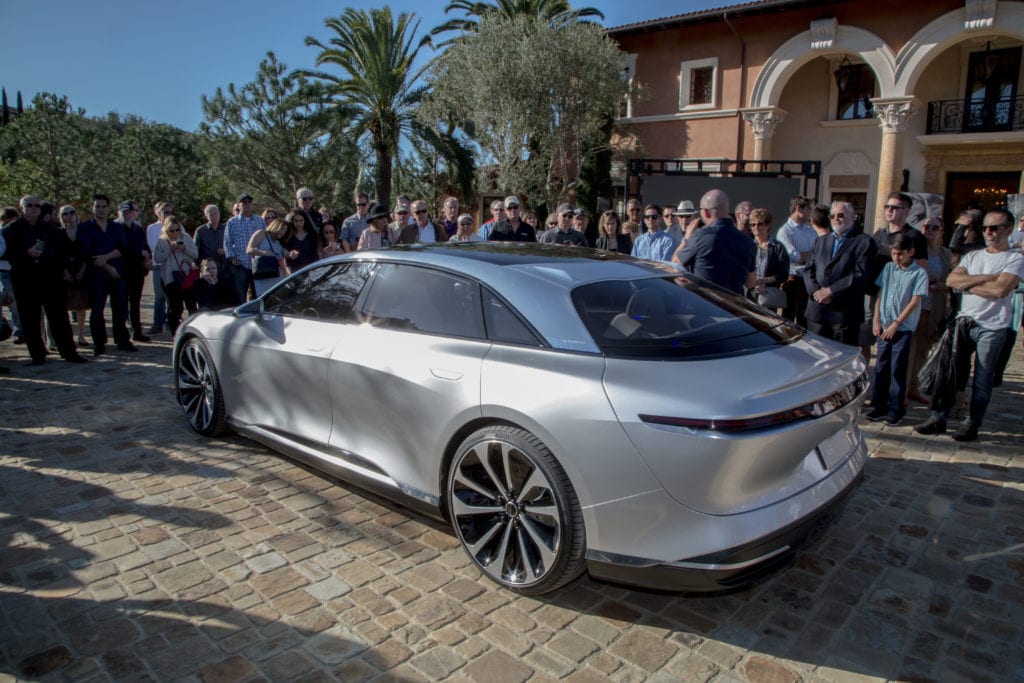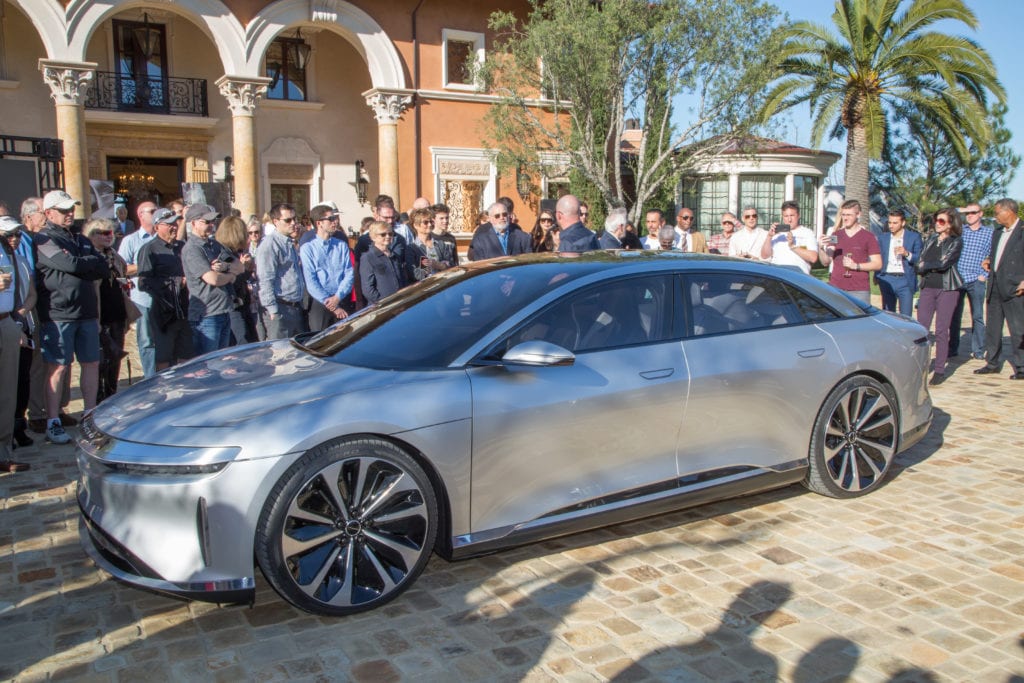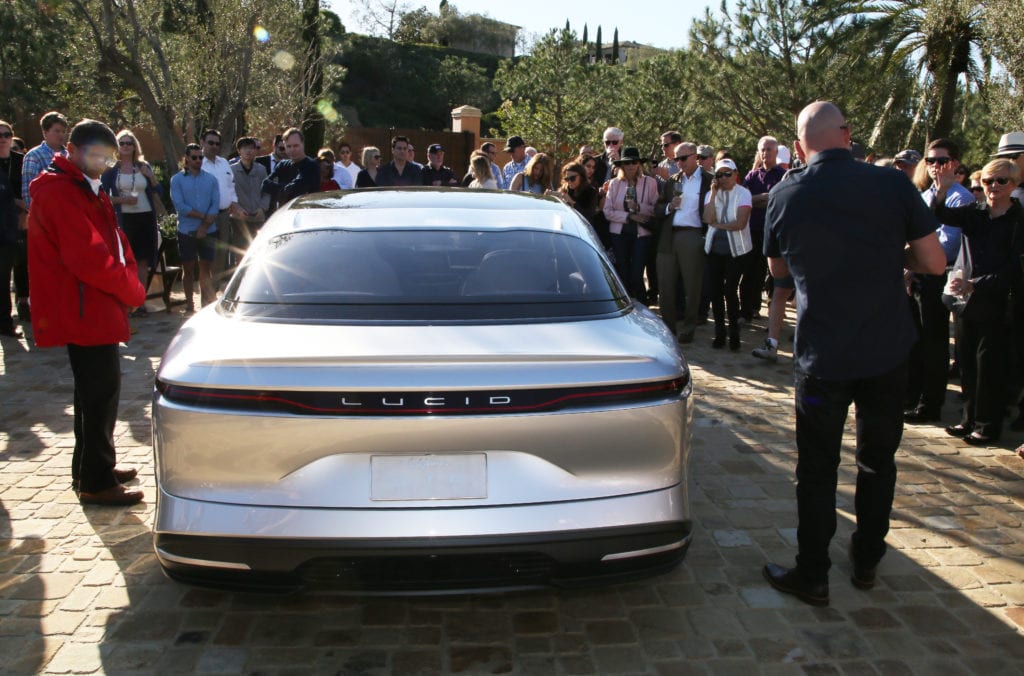Lucid Air
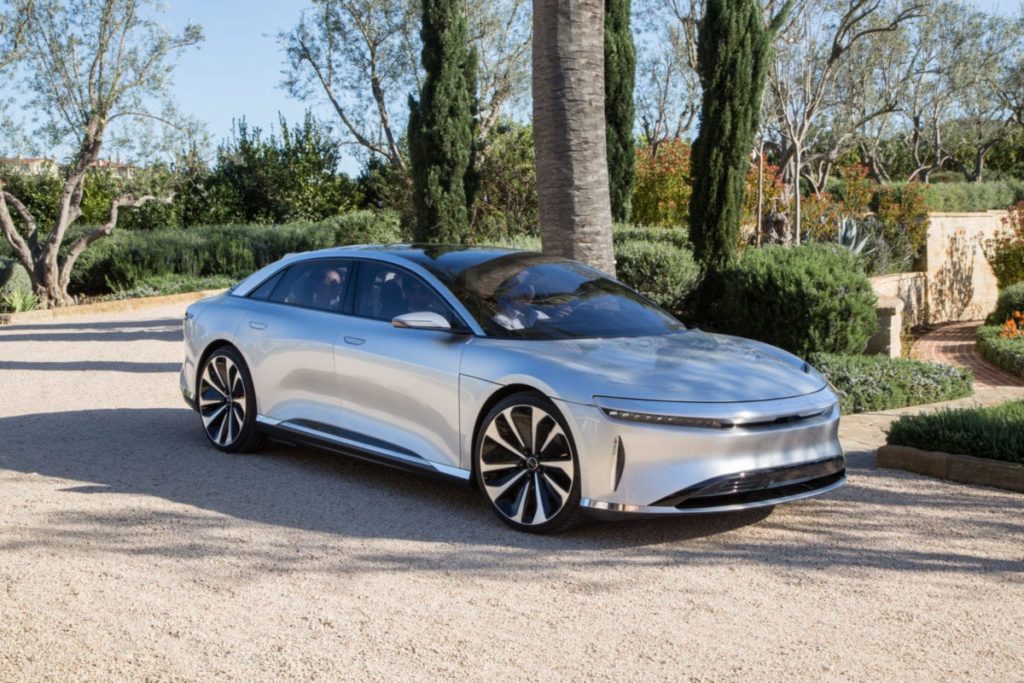
“I’ll believe it when I see it” is a classic caution applied to electric vehicle startups. We’ve seen them come–Tesla–and seen them falter–Faraday–so skepticism is warranted.
Into this world of uncertainty hummed the Lucid Air. Quite literally, the electric sedan quietly gliding down the approach to a $50 million estate in Newport Beach, California for an invitation-only showing. The valets busy with Mercedes, Audis and BMW i8s.
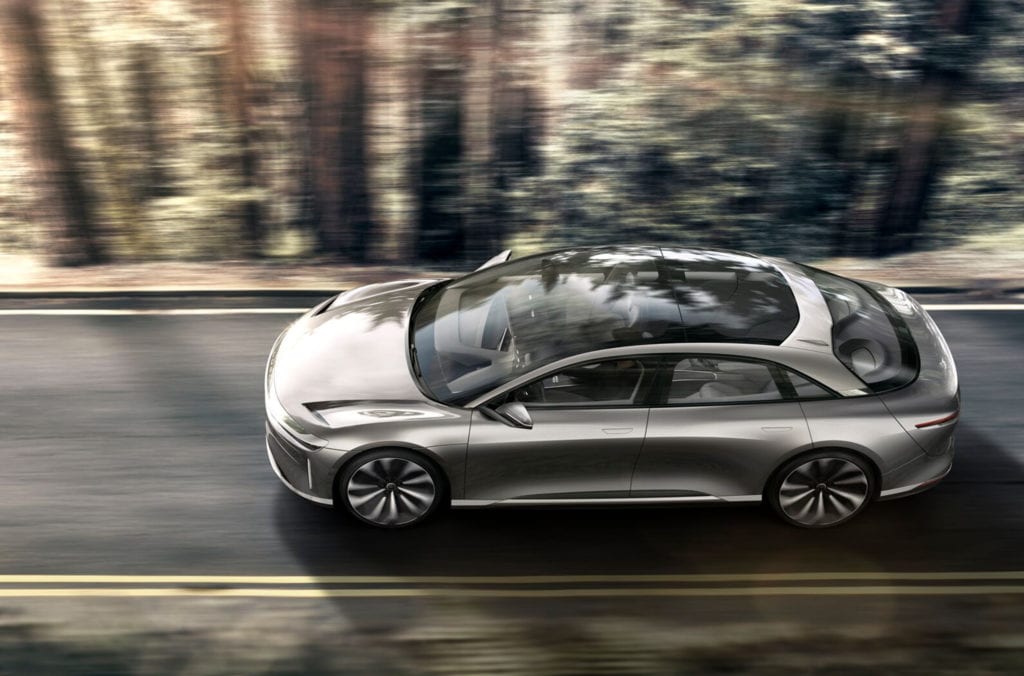
What is Lucid? Dial back to 2007. A firm called Atieva with significant Chinese backing was developing vehicle battery systems. In 2014 it began engineering an electric vehicle called Edna. A Mercedes-Benz Vito van was used to test the motors, inverters, etc. needed for an electric car. Eventually, Edna had motors driving the front and rear wheels. Picture this: a mid-size van doing 0-60 mph in 2.74 seconds.
At the same time, the Menlo Park, California company was designing the exterior and interior for its automobile. Under Design VP Derek Jenkins, the staff shaped a 4-door sedan with roughly the exterior size of a Mercedes E-Class and the interior package of an S-Class.
Come October 2016, Atieva was renamed Lucid and soon after the Air automobile was revealed. The firm is funded by several Chinese groups, Japan’s Mitsui & Co. and a somewhat ironic source. Venrock, as in “Venture” and “Rockefeller,” an electric eco-car patron tracing its roots back to oil magnate John D. Rockefeller. Times change.
Overseeing the Air’s development is Peter Rawlinson, an English engineer with experience at Lotus, Jaguar and, most importantly, Telsa during the design of the Model S. Describing the Air he told Fortune magazine to, “Picture what an ‘executive jet would feel like on four wheels.’”
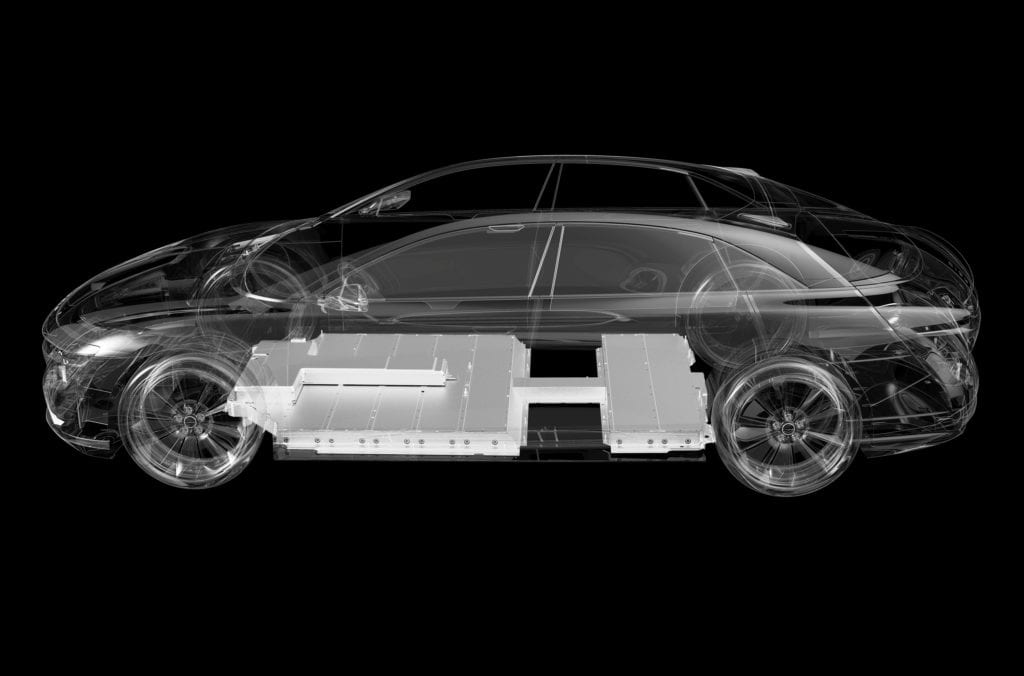
Basic layout for the Air has the batteries under the floor and along much of the cabin’s length. Samsung SDI and LG Chem will supply batteries. Both 100kWh and 130kWh options will be offered. The packaging density of cells allows Lucid to promise up to 400 miles of range. They also reckon on frequent rapid recharging with no ill effect.
With a 400-horsepower motor at the front wheels and 600 horsepower for the rears, Lucid is suggesting 0-60 in 2.5 seconds, which matches Tesla’s latest claim.
What’s next, Elon?
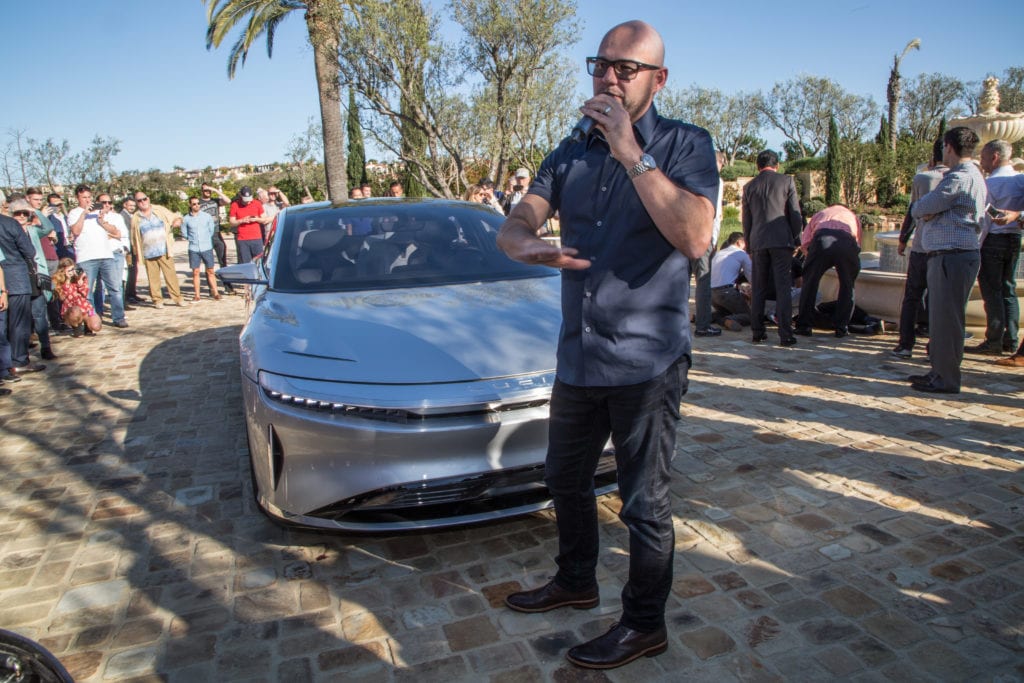
Jenkins, whose portfolio includes Audi, Volkswagen and Mazda, explained how the Air’s exterior design had to look forward to the future and tech, but also, “celebrate the automobile.”
“I can’t express how much we labored over getting that balance. There was a hot debate. On one hand you’re doing something new, shocking people. On the other hand the reality is that someone who is buying an E- or S-Class Mercedes or Audi A8 could be a conservative buyer so there has to be some classic elegance. It can’t be completely shocking and outrageous so that balance required a fusion between these two ideas.”
Air’s exterior design is interesting and refreshing, leading with a horizontal nose featuring squinting micro lens “insect eye” lights. There is no traditional front grille. Jenkins assures there are many cooling needs in an electric car, just not centered up front.
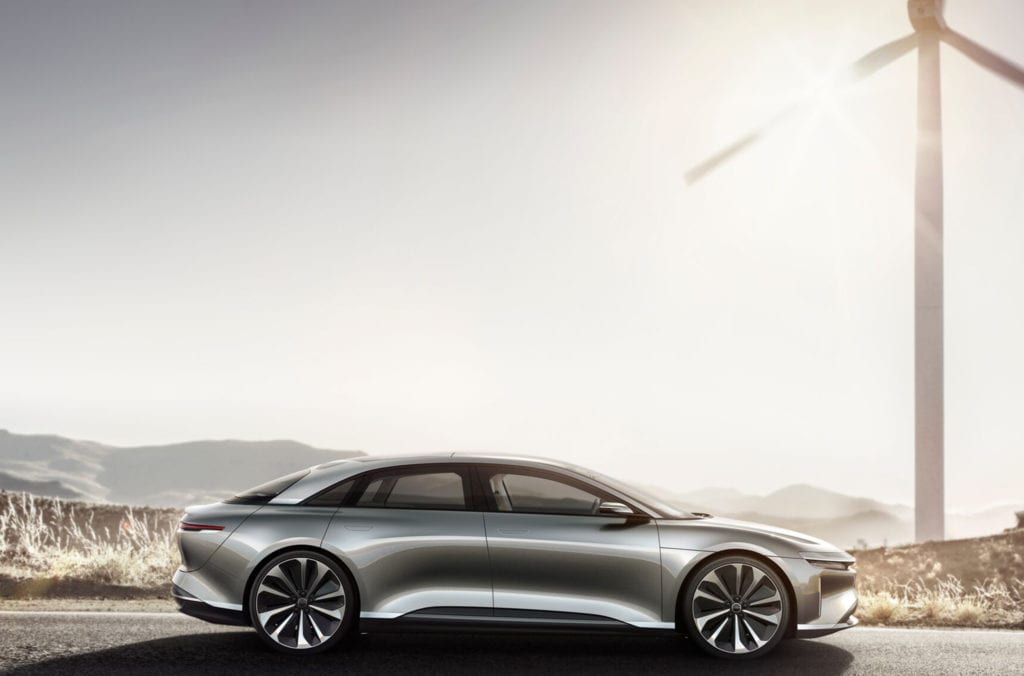
That unusual rear bias packaging of the interior is obvious from the side view. How the trailing edge of the back door closes almost halfway up the wheel arch. How the roof’s rear pillar is so far back the profile isn’t the classic long hood-short deck but long hood-almost-no-rear deck. By comparison, the rear design is downright conventional.
Normally interior comments lead with the front seats. Not with the Air. Lucid claims first class airline seating in back. We’d say business class but nonetheless enticing, with a 55-degree recline. Overhead, panoramic sunroofs shine a little light on you. Ahead, tray tables for refreshments. Sadly, no room for a flight attendant.
The front seats also look dramatic and were comfy for our short sit. The instrument panel is panoramic, stretching from the driver’s door to the far edge of the center stack. It’s loaded with information. If that’s not enough, below is a large iPad-like screen a la Tesla.
As if an electric car isn’t already quiet enough, the Air will have unique broadband noise cancellation as part of the 29-speaker (that’s not a misprint) sound system.
Anticipating autonomous driving, even first generation Lucids will be delivered with a “comprehensive sensor suite to scale to complete autonomy through ongoing software upgrades.” No timeline given.
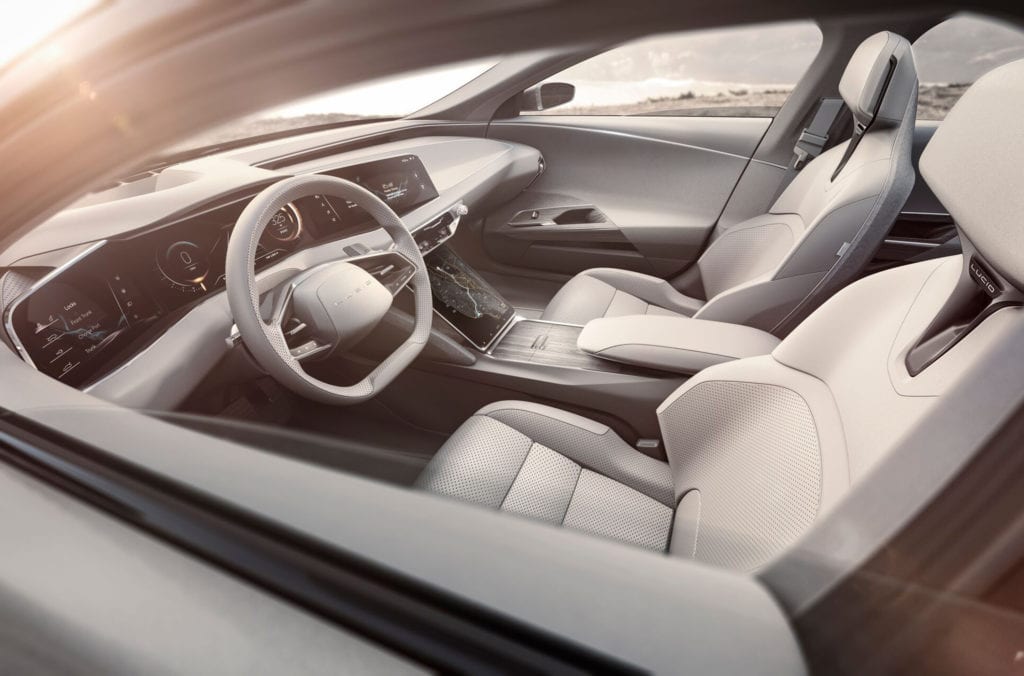
In December 2016, Lucid announced Airs would be assembled in a $700 million factory in Casa Grande, Arizona just southeast of Phoenix. Ground breaking is set for early 2017, production beginning sometime in 2018, with eventual employment of up to 2,000.
You can prowl through the Lucid story at https://lucidmotors.com/car, check out photos and even reserve a car. You’d shell out a $25,500 deposit to claim one of the initial 255 “Launch Edition” models or $2,500 for a “Standard” version. Final prices will be $160,000 for the Launch machines, around $100,000 for Standard. Lucid hints at a $65,000 model in the future.
All that for a car for which the factory has yet to be built. We want to believe it and we will when…

